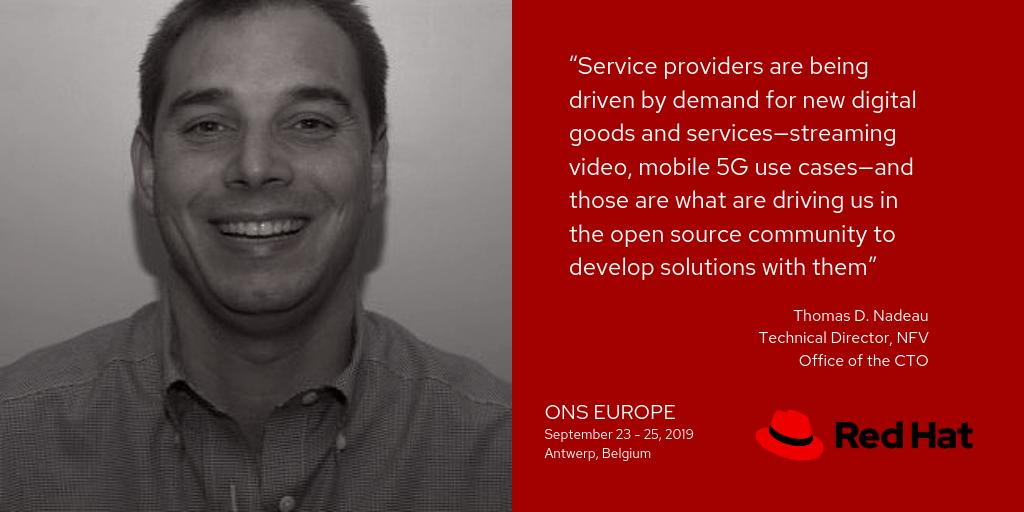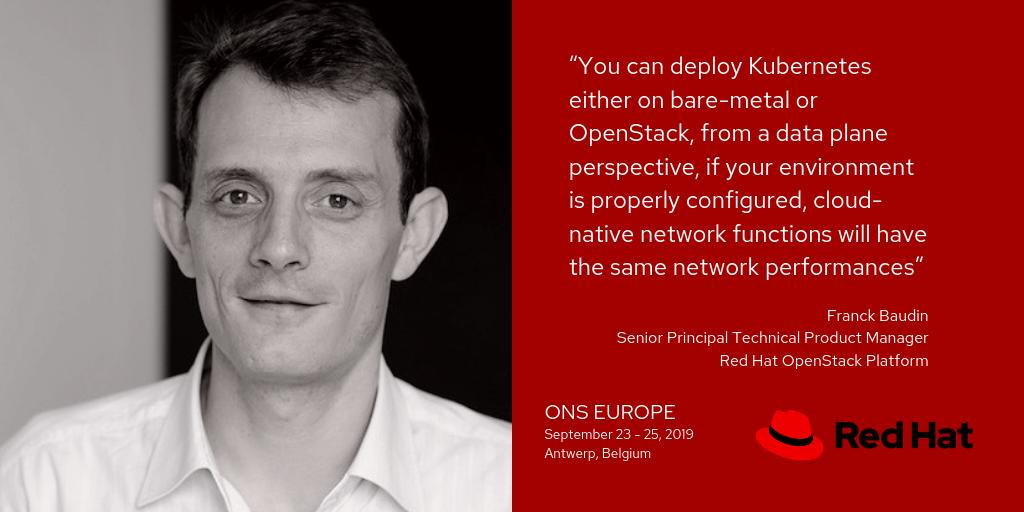Blog da Red Hat
More and more, open source technologies are gaining traction in the telecommunications industry as service providers reinvent their networks and push the boundaries with cloud-native networking functions and principles. But challenges remain, in particular around integration and interoperability of the many components that make up their infrastructures.
This was a central theme at the Open Networking Summit Europe in Antwerp, Belgium, an event focused on the future of open source networking and aimed at enabling collaborative development and innovation across enterprises, service providers, and cloud providers.
As digital service providers begin realizing value from open source platforms like OpenStack – including faster time to market, reduced costs, and improved reliability, scalability, and agility – they are in a better position to deliver the services their customers want: mobile 5G streaming video, audio, and more.
Generally, providers are not making a wholesale change to open source. More often, they gradually transition different stacks in their solutions from proprietary components to open source ones, as Red Hat’s Thomas Nadeau, director of NFV software engineering, explained in a TelecomTV interview while at the Open Networking Summit.

As they transition, service providers are looking for the kinds of testing and verification tools and processes that ensure the various open source components – regardless of who developed them – will integrate and interoperate within their infrastructures.
In a keynote panel discussion on compliance at the summit, participants pointed to the business value of compliance and testing in creating a level of interoperability that can, for example, undo the siloes of virtual network functions (VNFs) and network functions virtualization infrastructure (NFVi) and foster portability, so providers can scale services.
The panelists, including Red Hat’s Nadeau, emphasized the importance of collaboration in setting the requirements and processes for testing and verification to ensure there’s buy-in from both providers and vendors.
The panelists added that, in addition to collaboration, there needs to be consistency. “If we have consistent profiles that are known, it reduces the number of test cases that have to be done.”
Another key piece of successful compliance and verification testing is to consider its compatibility with DevOps, continuous integration/continuous delivery (CI/CD), agile, and cloud-native networking.
“It’s critical, given the nature of how people do business today in software,” explained Nadeau. “There are stacks of various components, and testing that integration is paramount to it working. The CI/CD pipeline is actually a way you can do that, a distributed way, with different vendors contributing and integrating [OPNFV Verification Program] OVP tests.”
OVP is an open source, community-led compliance and verification program to demonstrate the readiness and availability of commercial NFV products and services, including NFVi and VNFs, using Open Platform for NFV (OPNFV) and Open Network Application Platform (ONAP) components.
Red Hat is active in the Common NFVi Telco Taskforce (CNTT) – which recently published its first specifications to align the industry on a unified NFV framework. The task force wants to create and document a common NFVi framework in order to speed the deployment of virtual network functions (VNFs) across the entire telecommunications stack – an antidote to the numerous instances of NFVi that often force vendors to create multiple versions of their VNFs to work with the different flavors of NFVi.
OpenStack has been at the center of the NFV journey for service providers. With the entrance of new technologies such as containers and microservices architectures, the rise of cloud native network functions (CNFs) will bring another layer into the stack adding new challenges. In a presentation, “Pushing the Boundaries for Cloud-Native Network Functions,” at the Open Networking Summit, attendees learned about the expectations from the telecommunications industry when it comes to cloud-native network functions and how the technologies are adapting to the shift in the marketplace.
During the presentation, Red Hat’s Franck Baudin, senior principal technical product manager for OpenStack NFV, and colleague Marc Curry, senior principal product manager for OpenShift Container Platform, demonstrated how to verify Precision Time Protocol (PTP) accuracy is compliant with Radio Access Networks (RAN) requirements, as well as other real time characteristics, leveraging both virtual machines and containers on a single OpenStack deployment.

The telecommunications industry is accelerating its transformation. By building their networks on consistent infrastructure profiles and bringing open source innovation into them, service providers can gain the benefits of NFV and cloud native network functions.
Watch the webinar NFV Validation at the Telecommunications Network Edge and learn how to perform OpenStack telco post-deployment validation with open-source, standard NFV tools, verify that the networking SLA is respected (throughput, latency, jitter), and troubleshoot and pinpoint misconfigurations.
The webinar features Baudin, and Christophe Fontaine, senior software engineer. The presenters use a typical vRAN OpenStack deployment for a demonstration of hosting VNFs and CNFs. Common networking features are activated all at once: SR-IOV, OVS-DPDK, KVM-RT, Distributed Compute Nodes, collectd and FPGA. This methodology and these tools are the foundation of the Red Hat NFV team’s daily work and have been proven in actual deployments.
About the author
Hanen Garcia is Global Telco Solutions Manager at Red Hat, with more than 20 years of experience in the telecommunications industry building network solutions and value-added services for large telecom operators. In his current role, he is driving solutions to support telecommunications service providers during their network transformation journey. Prior to joining Red Hat, he worked at Ericsson as an innovation specialist designing cutting-edge solutions for mobile networks. Garcia holds an M. Eng. in innovation management from the ÉTS in Canada and an M.Eng. in telecommunications from Polytech in France.

